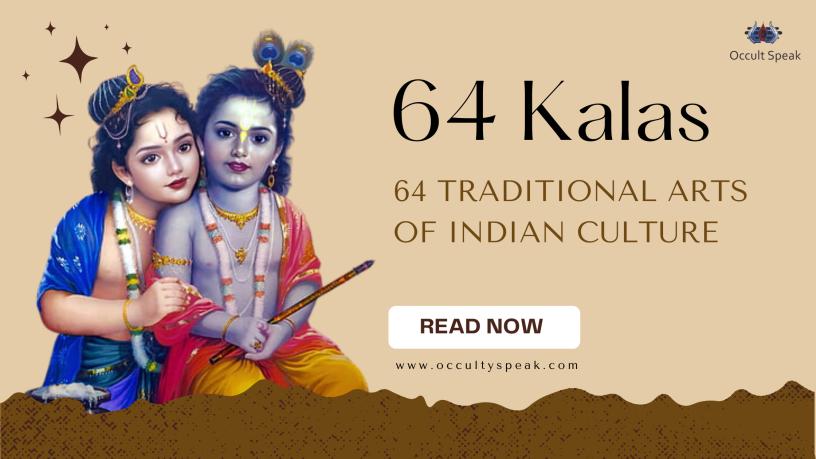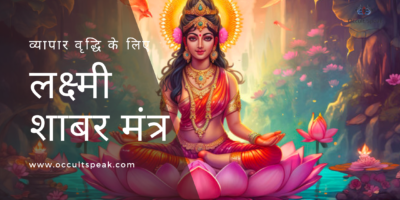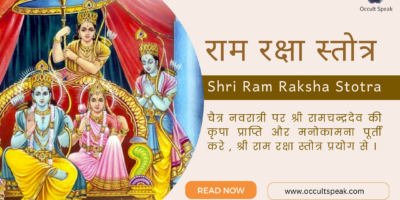64 Kala / 64 TRADITIONAL ARTS (Chatuh Shashti Kala)
The 64 Kala, also known as the 64 art, is an idea in Hinduism that is a reference to the 64 capabilities and achievements that a well-rounded, educated person must possess. The list may differ slightly among various texts but typically comprises:
The 64 Kala were considered to be the most important part of an education that was well-rounded in ancient India. They were believed to be an opportunity to improve the body and the mind and create a peaceful and culturally diverse society.
The 64 Kala are considered to be an ideal that is worth pursuing, and many strive to implement them in their lives.

64 Kala of Krishna
There are a variety of versions and numerous different interpretations of Chatuh Shashti Kala or the 64 Traditional Arts. These 64 Art Skills were studied by Lord Sri Krishna and Balaram ji during their gurukul education at the Sandipani Muni Ashram presently located in Ujjain, Madhya Pradesh.
These are sacred arts that are intended to learn to grow spiritually and merely to earn money. Today’s people have started learning and earning through this precious knowledge, this traditional knowledge was lost during the Mughal and British Eras due to which the ardent scholars of this 64 Kala’s are hardly seen.
What is 64 Kala or 64 Traditional Arts of Sanatan Dharma
Below is the list of 64 Kala/ 64 Art Skills that Shri Krishna and Balaram learned under the guidance of their spiritual guru Shri Sandipani Maharaj.

64 Kala of Krishna
What is 14 Vidya 64 kala of Krishna ?
1. Gitam – The art of singing.
2. Vadyam – The art of playing musical instruments (such as violin, venu [flute] and mridanga).
3. Nrityam – The Art of Dancing” The art of dancing.
4. Alekhya Alekhya – The art of drawing and painting that starts from simple village crafts to intricate ones.
5. Visheshaka-chedyam – the art of putting the tilaka into various forms, dots on the face, cheeks,foreheads, and forehead
6. Tandula-kusuma-bali-vikarika – Art of drawing rangoli using colored rice and flowers in front of archa vigraha or utsava vigraha.
7. Pushpastaranam – the art of arranging flowers and stunningly decorating them.
8. Dashana-vasana-angaragaha – The art of painting different parts of the body for performances and also the art of dyeing clothes in varied natural colours.
9. Manibhoomika-karma – The art of creating holes in pearls and then stringing them in a variety of designs onto thread or string.
10. Shayana-rachanam – The art of setting the beds to sleep and taking a rest in the Lord.
11. Udaka-vadya – The art of setting up and playing the Jalataranga instrument (an Instrument with containers filled with water at various levels).
12. Udaka-ghata is the art of controlling and stopping the flow of the aqueducts, streams, etc. at the right intervals to build up force to continue in a way that makes use of the flow of water for various uses, like fountains, etc. technique of splashing water with a syringe or using a hand, etc.
13. Chitra’s Chayoga : The art of making the perfect combination of drugs (useful in treating ailments as well as removal of poisons or poison, etc.) as well as the art of controlling the desires of the body and senses through repeatedly putting the body and senses into discomfort The art of performing amazing actions like illusions, stunts, and so on.
14. Malya-grathana-vikalpa : Art of preparing flower garlands and art of entwining different natural materials such as leaves of different trees for decoration of the walls, ceilings, stage, doors, altar, etc.
15. Shekhara-apeeda-yojanam – The art of decorating the head with a flower garland, crown, cloth, turban, jewels, feathers, etc; the art of fixing the crown in different positions of the head.
16. Nepathya-prayogaha – Dressing in disguise and dressing oneself or actors (for performances on stage) using various costumes for weddings and setting up of a stage for theatrical performances and the art of arranging toiletries (items like toothbrushes or soaps that smell good, for instance).
17. Karna-patrabhangaha – The art of decorating the ears with jewels, flowers, ivory, conches and so on.
18. Gandha-yuktihi – The art of making fragranced liquids (such as oils, and water) and fragrant powders (sandalwood pulp, etc.) and aromatic balls as well as the art of perfume mixing.
19. Bhooshana Yojanam – The art of embellishing different areas of the body using appropriate jewellery; the art of creating new jewellery.
20. Aindrajala-kauchumarascha-yoga – The art of rectifying loss in the body that may occur due to diseases or black magic and reviving the body back to the normal state; the art of performing magical feats (within the magical field there is an art called bahu-rupi, by which a person dresses in such a way that when he approaches a friend he cannot be recognized).
21, Hastalaghavam is an art of dexterity with hands and wit by the mind’s presence;
22. Vichitra-shaakapoopa-bhakshya-vikaraka-kriya – Art of preparing various foodstuffs.
23. Panakarasa-raga-asava yojana – Art of preparing a variety of liquid drinks such as syrups and beverages using the nectar of flowers, extract of leaves, mixtures of spices, etc., of varieties of colours and served hot or cold at different times of the day or year and having various tastes and intoxicating effects.
24. Soocheevana Karmani – A technique of stitching clothing, sewing clothes using a variety of needles, forming designs in embroidery, making mirrors, and setting jewellery with reflective studs to serve various uses.
25. Sootra-kreeda– Technique that involves manipulating threads, or strings for dancing puppets, or for stringing wires onto musical instruments, like the sitar, vina, tamboura and esaraja.
26. Veena-Damaruka-vadyani – Art of making musical instruments such as veena, damaruka, etc
27. Prahelika Prahelika – The art of creating phrases and sentences with hidden meanings; the art of formulating and solving puzzles.
28. Pratimala The art of creating and reciting passages or sentences in response to another people’s presentations (usually linked to an end word, letter or with the theme, and then presenting it in another way, as a test of memory, ability or arguments).
29. Durvachaka yoga – The art of creating and using complicated phrases or words that cannot be repeated or understood by the other person and can cause someone to be confused by these phrases or words.
30. Pustaka-vachanam – The art of reading books quickly (yet grasping them completely) according to the topic at hand.
31. Nataka-akhyayika-darshanam – Art of scripting, rehearsing and acting out dramas of varieties of forms such as without speaking but through signs and expressions only; or through dialogues or hymns or their combinations.
32. Kavya-samasya-pooranam – Art of completing a verse or constructing a verse (when provided with only a part of the full code/sutra or the shortcode itself) to solve or explain the verse of its meaning; the art of solving crossword puzzles, filling up the missing spaces and making complete words.

64 Kala of Krishna
33. Pattikaa-vetra Bana Vikalpa The art of weaving baskets from cane and making arrows out of cane, etc.
34. Tarku-karmani The art of spinning threads using a spindle or charkha, and thus creating clothes.
35. Takshanam Takshanam – The art of carpentry (working using wood) to create chairs, furniture beds, beds etc.
36. Vastu-vidya- Engineering art (Shilpa shastra) for the construction of temples, palaces, home bridges, etc.
37. Roopya-ratna-pareeksha – Art of examining the authenticity of valuable jewels such as gold, silver, pearls, etc (Ratna pariksha shastra) through tests of colour, lustre and other various tests.
38. Dhatu-vadaha is the art of metallurgical science (examining soil, stones and metals. Cleaning them and creating various rust-free materials by combining them, etc. ) The art of studying the soil to discover minerals.
39. Mani-raga-akara-jnana – Art of identifying pearls of different colours, grouping and setting them on the ornaments.
40. Vriksha-ayurveda-yogaha – Art of studying the different species of plants, to crossbreed plants and trees and get different types of fruits and flowers; treatment of trees, plants from their kapha, pitta and vata disorders; techniques for gardening that involve planting trees, plants and shrubs, according to nakshatra’s directions, nakshatra’s other rules.
41. Mesha-Kukkuta-Lavaka-yuddhavidhi – Art of knowing the mode of fighting from rams, cocks (kukkuta vritti) and frail fighting; the art of engaging rams and cocks in fighting.
42. Shuka-sharika-pralapanam – Art of teaching parrots and other birds to speak and to answer the questions of human beings.
43. Utsadanam Utsadanam is – The Art of healing through altering the mind of another, and making them behave by one’s desires (sometimes this is known as the practice of hypnotism or psychology).
44. Keshamardana/Dehamardane-ca-kaushalyam – Art of performing body massage using pressure, medicated oils, etc; the art of washing hair, dyeing it in different colours and curling it in different ways.
45. Akshara Mushtika Kathanam – The art of revealing secrets or conveying spiritual meanings from scriptures by using specific mudras (folding fingers in various ways) Art of telling the contents of a book, without actually seeing the book.
46. Mlechita vikalpaha – The art of telling a piece of secret information by twisting the words or adding a letter to every word, so that people around do not know what the word means even though the same language is spoken.
47. Deshabhasha-Vijnana The art of speaking and comprehending the languages (of diverse nations) of humans as well as the languages of birds and animals.
48. Pushpashakatika – Making different objects made from flowers, such as aircrafts, carriages (pushpaka vimana) etc.
49. Nimitta-Gyan – Art of foretelling future events through looking for signs.
50. Yantramatruka-Jnanam – Technique of constructing and securing machines or animals to various vehicles and the art of creating magic grids, arrangements of numbers that make up the same amount across all directions.
51. Dharanamatruka – A method of storing memories, recalling and recollecting things without the aid of any devices or items external to the user.
52. Sampatyam – Art of cutting and slicing diamonds as well as other valuable gemstones; (also interpreted as) the art of reading loudly in a pleasant way.
53. Manasee-kavyakriya – A Method of asking questions and responding instantly by writing poetry in the mind, which demands a deep understanding and experience of scriptures as well as the practice of memorizing multiple conditions at once (also called ashtavadhana-vidya)
54. Abhidhana-koshaha-chandojnanam — Art of replacing words with synonyms, one word for a sentence, etc through extensive mastery of the dictionary and the language itself; the art of recognizing the action and reaction of physical actions and their combinations and permutations.
55. Kriyakalpa Kriyakalpa – The Art of planning before taking any action or undertaking; the art of understanding the psychic actions of a person.
56. Chalitakayoga – Art of satisfying one’s wants (which are difficult to achieve; however, when one wants something that isn’t reasonable and will never be fulfilled, it can be tamed and satisfied) Art of making an adversary become a friend or transfer the direct actions of a physical component to other objects.
57. Vastragopanani – Protection of clothing from mites, insects, fungus, etc.
58. Dyutavisheshaha-akarshakrida – Art of playing different games and attractive sports in a challenging spirit.
59. Bala-kreedanakani The Art of engaging children by playing games (which are designed specifically for kids).
60. Vaijayakeenam vidya- Art of beating opponents in any circumstance (of the sport).
61. Vyayamakinam-cha-vidyanam – Art of performing various bodily exercises to make the body strong, flexible and alert.
62. Vainayaki-vidyanam – Art of discipline (yama and Niyama) and the practice of sadachara (good behaviour).
63. Vaijayaha – The art of overcoming the senses.
64. Vaitaliki Vidya – the art of awakening the master through singing; the art of meditation on hamsa japa and Anahata Nada.
Love & Light,




Leave a Reply